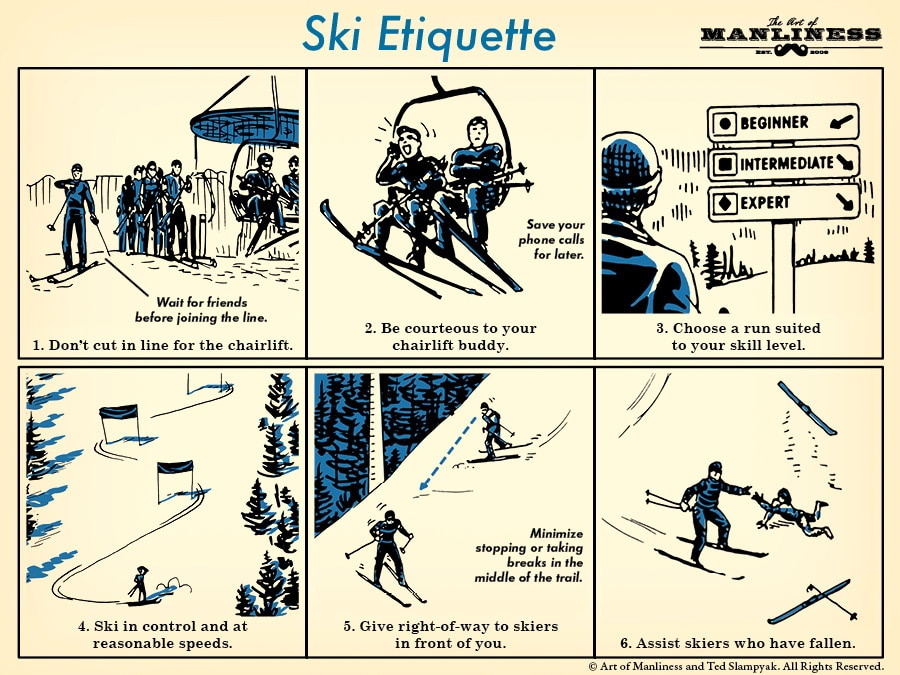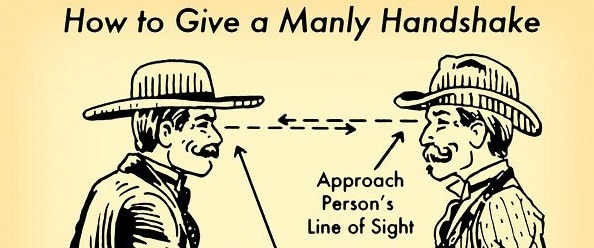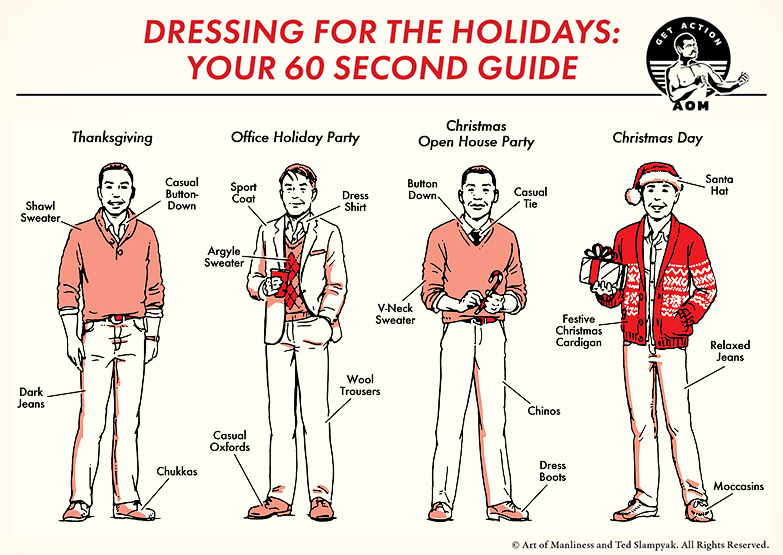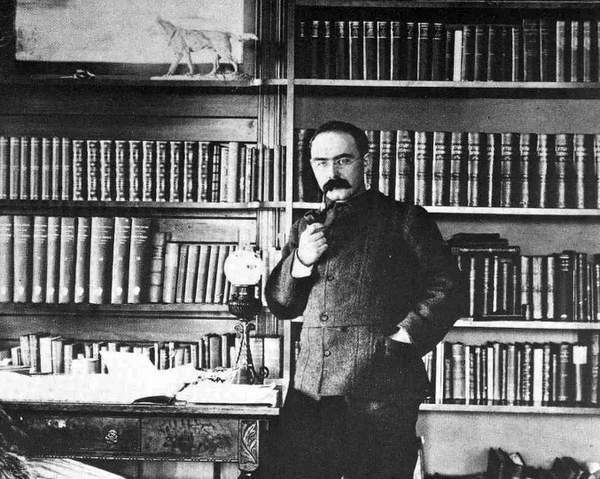
Editor’s note: This is a guest post from Nate Pedersen.
Earlier this year we covered the joys and basic how-tos of starting a collection. It’s truly an everyman’s hobby. If you’re a gentleman reader — and you should be — then there is perhaps no better collection to amass than a hearty library of manly tomes. With this post I’d like to teach you how to expand your library with a purposeful book collection and help it achieve a new standard of awesomeness.
But first, some background. The personal library has a long, rich history of manliness. It was a standard feature in homes from the 17th through the 20th centuries. For the upper class, the library was the perfect place for managing an estate and hanging out with other gentlemen (usually with a few drinks and cigars). And for the working man, a personal library of even just a few bookshelves was a great escape after a hard day’s work, as well as a potential tool for moving on up the economic ranks.
Wealthy gentlemen of former generations would typically collect complete sets of classic writers (“The Complete Works of Dickens” for example), standout books in the advancement of civilization (the Great Books), and books related to their personal areas of interest or occupation. The same standard titles could be expected in any gentleman’s library, which meant, with some notable exceptions, that the average collection was kind of boring. You could find variations on the same library in any wealthy estate in America or Britain.
The working man’s library, however, was much more focused and interesting. Limited budgets meant that books were a luxury expense and could only be bought for specific aims or for a deep and abiding passion for a particular work. As a result, a working man’s library was a fascinating look into their life, even if it was ostensibly much less impressive.
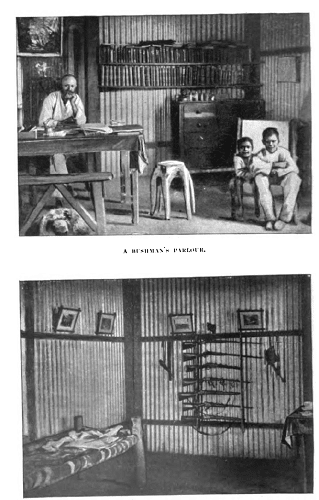
I’m way more interested to know what books were sitting on the two shelves in the hut of this Australian bushman versus the gigantic libraries of wealthy businessmen. Think about the journey these books must have taken to arrive at this shack deep in the Australian bush and how important they must have been to this man. (You wouldn’t think this picture could be any cooler, but note that the opposite wall holds his rifles.)
All men should build a general library like that pictured above. We should have ready access to the important books of our lives. What books would you take with you to a shack in the Australian bush? Those are the books you should buy. You don’t need any guidance here; just buy the books you love. Get them in the format you like best. Forget about re-selling them. Build the library to use it. Write in the books. Toss them in your rucksack or in the backseat of your car when you’re on a road trip. Be reckless with their condition. And if you prefer ebooks, remember that buying physical copies of your favorite books increases your antifragility.
Book collecting, however, is another beast. You can go beyond the formation of a general library to assemble a purposeful, carefully built book collection united around a central theme. And here is where we separate the book collectors from the rest of the pack.
Collectors are hunters who chase their query through the dusty shelves of antiquarian bookshops. (Or, less poetically, across the blinking screens of their computers.) They build focused collections with particular goals in mind. Aesthetics, interests, profit, charity, work, pleasure, scholarly pursuits, pure awesomeness, and greed are all reasons that men collect books. For example, I built one small collection for its aesthetics on the bookshelf, another small collection to have all the works of a hard-to-find author, another collection purely out of interest in the material, and another just to make a buck on later.
Regardless of the motivation, however, any book collection worth its salt must be united by an easily identifiable central theme.
A.W. Pollard wrote of book collecting in his famous essay in the 11th edition of the Encyclopedia Britannica (1911):
“In the modern private collection, the need for a central idea must be fully recognized. Neither the collector nor the curator can be content to keep a mere curiosity shop. It is the collector’s business to illustrate his central idea by his choice of examples, by the care with which he describes them and the skill with which they are arranged.”
Those words were true in 1911; they remain true a century later. A central idea for your book collection helps you stay focused, save time and money, and avoid unnecessary accumulation.
Types of Book Collections
But what should you collect? How can you stay focused? While there are many ways to build a collection, here are several of the tried-and-true routes:
1. The Author Collection: In this collection, you build an entire collection of books by a particular author. Typically, this means buying all the first editions of an author’s work, but a more comprehensive view includes reprints, foreign translations, special editions, and magazine appearances. Building an author collection is an expensive undertaking if you want to go after prominent authors. However, you can build an inexpensive collection by focusing on an up-and-coming author, or a favorite author who has been overlooked by history. A variation on the author collection is the illustrator collection – buying all the books illustrated by a particular artist.
2. The List Collection: In this collection you start with a simple, well-established list (Pulitzer Prize winners, for example, or Man Booker Prize winners) and then go out and buy all the books featured on that list. Once again, this collection would typically focus on the first editions of these works, but could be more expansive in its scope, including reprints, classic editions, etc. Other non-prize-winning lists include the Rivers of America books, the Baedeker guidebooks to Europe, or the American Guide Series.
3. The Topical Collection: The topical collection is limited only by your creativity. I’ve interviewed a young man, for example, who was busy collecting everything he could find about the 1972 Munich Olympics for the benefit of his dissertation. Now that’s a cool and unexpected book collection to browse on the shelf. Similarly you could collect books about trout fishing in Montana, books about 20th century golfing in Scotland, books praising the virtues of Cuban tobacco, or adventure novels set in Africa. The potential list of topics is endless. Topical book collections are often well used by their collectors.
4. The Aesthetic Collection: This collection views its chosen books as art objects. You might collect publisher’s binding books for example, or books with dust jackets illustrated by a favorite artist (such as Edward Gorey), or 19th century sheet music with color lithograph covers, or books bound in vellum. Building an aesthetic collection is similar to building a small art collection. You purchase the books because they look awesome.
And of course you don’t have to limit yourself to just one type of collection; I have one of each of the above types. Regardless of the sort of collection you build, consider with each purchase how the specific selection echoes and enhances the central theme expressed in your library. This will help you stay focused and not lose yourself in the pursuit. (Book collecting, as with any collection, bears some similarities – both positive and negative – to hunting and gambling.)
Condition Matters
A good rule of thumb is to purchase the nicest copy you can afford. What does this mean? Get the book in the best condition relative to your budget. When you are browsing books online or in a bookseller’s catalogue, you will notice that booksellers classify their books according to a roughly-standard rubric of grades that begins at “Fine” and descends to “Poor”:
- “Fine” means the copy is essentially mint, probably unread, showing no signs of wear or use, especially considering its relative age.
- “Near Fine” means it’s close to fine, but with a few very minor defects, which the bookseller will elaborate on in the book’s description.
- “Very Good” means the book has a defect or two of some note, which again will be elaborated upon in the description.
- “Good” usually has a handful of defects.
- “Fair” contains a significant number of defects.
- “Poor” is a reading copy only, not well-suited for a purposeful book collection (unless the book is extremely rare).
Of course each bookseller’s definition of what exactly differentiates a “Fine” book from a “Near Fine” book, and so on, is subjective, but these grades work well as general guidelines.
A word about dust jackets: get them if you can. Try to find books with their original dust jackets and again, try to get them in the best condition you can afford (sometimes of course this isn’t feasible). Dust jackets are rated on the same scale from “Fine” to “Poor,” and they make a huge difference in the value of the book. Example: a first edition of The Great Gatsby by F. Scott Fitzgerald will set you back a few grand. But a first edition with its original dust jacket? Well over $100k. Seriously. So get those dust jackets. And protect them with Mylar covers, available at paper and office suppliers like Demco and Brodart. (Read more about the first edition of The Great Gatsby and why it’s so valuable.)
Where to Get Collectible Books
Now, how do you track down your books? Browsing the bookshelves of a used bookshop is cool and opens the doors to serendipity, but you’ll also want to harness the ample power of the Internet to find specific books for your collections. Abebooks.com and Biblio.com are two excellent aggregate sites for tracking down rare and out-of-print material, which you can then purchase from independent booksellers around the world. eBay is also a treasure in this regard.
If you’d like some help getting started, seek the advice of a rare book dealer. They are easily found online through the Antiquarian Booksellers Association of America, many of whom would welcome the opportunity to help a new collector start navigating these murky waters.
How to Save Money While Book Collecting
If you don’t want to break the bank on your book collection, heed these tips:
Don’t be a hoarder. Sell the books no longer relevant to your collection. As you find nicer copies of books in your collection, sell the lesser versions. eBay is a great outlet for this.
Be savvy on eBay. Learn how to save searches. Learn how to search “completed listings” to see how much similar titles have sold for in the past. Get a sense of a book’s value, and then bid accordingly the next time the title comes up for auction. Keep an eye open for deals.
Know your material. Learn all you can about your chosen genre/topic/author/illustrator. You’ll be able to spot interesting material — and bargains — that will fit into your overall theme.
Cultivate a relationship with a rare book dealer. He or she will offer you interesting material related to your collection before advertising it publicly (where it might be offered at a higher price).
Buy direct from a bookseller. Sites like Abebooks.com or Biblio.com are awesome for collectors, but they take a commission off of each sale from booksellers. As a result, some booksellers offer their books cheaper if you buy direct from them or from their own website. Especially with more expensive books, investigate this option before purchasing.
Regardless if you become a dedicated book collector or just aim to assemble the important books of your life, remember this quote about self-sufficiency from Cicero, “Anyone who has a library and a garden wants for nothing.” So let’s all want for nothing.
Do you have a book collection? Tell us about it in the comments!
_____________________________________________
Nate Pedersen is a librarian, journalist, and editor in Bend, Oregon. He was recently featured in the “So You Want My Job” series here on AoM. Before becoming a librarian in Oregon, Nate worked for rare book dealers in North Carolina and Scotland. He collects the American Guide Series produced by the Federal Writers’ Project during the Great Depression. His website is http://natepedersen.com.
Tags: Hobbies

